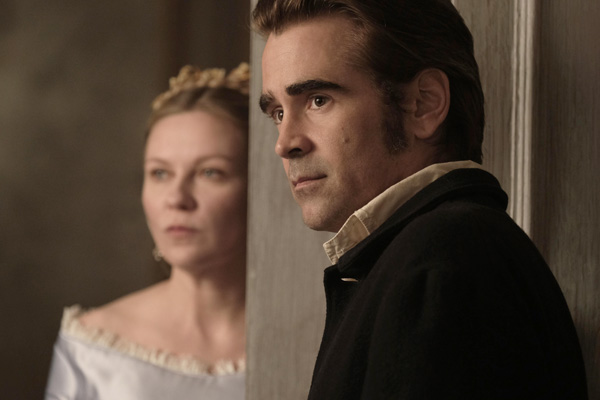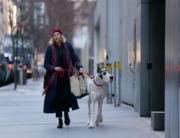Besotted, bothered, and bewildered are the Southern belles of the Miss Farnsworth’s Seminary for Young Ladies. Living in the remote Virginia countryside during the waning days of the Civil War, they harbor a wounded Union soldier, Corp. John McBurney (Colin Farrell). The household includes headmistress Martha Farnsworth (Nicole Kidman), teacher Edwina Morrow (an underused Kirsten Dunst), and about half a dozen adolescents and teenagers.
Farnsworth reasons that McBurney should be nursed back to health under her care, after she has removed shrapnel from his leg and sewn up his wounds, before he’s turned over to the Confederate Army. When she realizes that he would likely perish in custody, even if he’s healthy, she elongates his convalescence after taking a household vote. Besides, the school could use a man to help out in the garden now that there are no slaves to run the estate, which looks straight out of Hush…Hush, Sweet Charlotte. After all, he’s not really fighting for the Union cause; he’s a paid mercenary.
This is the setup for a highly hormonal, hothouse drama under the Spanish moss, of which there are abundant shots through the sunlit mist. However, director Sofia Coppola has corseted the drama and neutered the low simmering sexual tension. By far, this is most conventional and conservative of her six films, from the camera angles to the editing.
It’s based on the novel by Thomas Cullinan, as well as the script for the 1971 screen version, directed by Don Siegel, which would still be rated R if it were released today. (Its screenwriters, Albert Maltz and Irene Kamp, are given credit along with Coppola.) The biggest change: the writer/director has cut out a lot, namely the sex, which now makes for whiplash character transitions. The movie feels like an abridgement of a highly pulpy game of cat and mouse(s). For example, don’t expect a three-way here between Farrell, Kidman, and Dunst.
Instead, the script highlights the macabre humor that’s inherent in the story when the women turn against McBurney after he breaks their trust. Nervous laughter is what Coppola aims for, and the film received it in spades at Cannes, as the females drop the niceties and go mano-a-mano with McBurney. Back in 1971, audiences weren’t so sure how to react; the pan from the New York Times pointed out the unintentional laughter from the audience. Yet going for laughs in any version undermines the tension in this heavy dose of Southern Gothic.
Based on the press leading up to the film’s premiere, many news articles assumed that Coppola would emphasize the women. If anything, she has bumped them off their pedestals by underwriting their roles, and she positively castrates Colin Farrell’s, ah, part. If you want to witness the power of sexual charisma, watch Clint Eastwood in the Siegel version. The actor, and his director, lay all their cards on the table, so the audience can sit back and enjoy the cruel intrigues as the corporal manipulates the household and takes pleasure in his power. Farrell’s stud is a nice guy, and less a man of mystery.
True, the version from the ’70s is over-the-top, one could say whackadoodle, but Coppola has conversely toned down the eroticism; it’s as if everyone has taken a cold shower. Some of Siegel’s subplots have been cut and are not missed, especially one involving incest, but Coppola plays it safe. Slavery is nowhere in sight; the house slave has been cut out of the story, and yet somehow, somebody has the time to whip up elaborate meals.
Overall, this is the most romanticized version of the Old South in some time, namely because of the casting of Kidman, Dunst, and Fanning, who are all picture perfect in their white muslin dresses, cascading curls and all. McBurney’s dilemma becomes not which frigid spinster can he manipulate but which screen goddess should he bed. Consider that the headmistress role in 1971 was played by character actress Geraldine Page and the scenario changes completely. That film was a showcase for Page and Elizabeth Hartman, as Edwina.
The 2017 version was among the 11 films playing at Cannes that were shot on actual 35mm film. A bulk of the story takes place within dark, candlelit interiors, and like its cast, the film always looks gorgeous, bathed in diffused lighting. After an overlong first act, it slowly heats up, and it turns into a roller-coaster ride of a bodice ripper. Still, it’s never clear why Coppola chose to make this film, or what she was really trying to achieve, other than to beautify a lurid tale.

















Leave A Comment